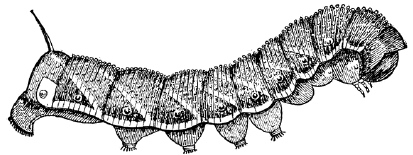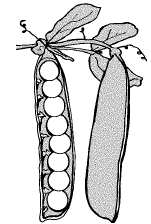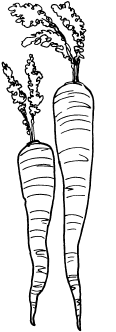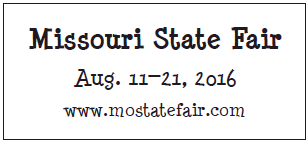

To send a message to an author, click on the author's name at the end of the article.
This Month in Ag Connection | Ag Connection - Other Issues Online
Sunlight powers agriculture and, fortunately, is free to all farmers. The challenge is to harvest as much sunlight as possible. Fields receive untapped sunlight for several months each year, because commodity crops might be in the field for only four to five months. To benefit from this free resource consider planting cover crops between cash crops. Cover crops protect the soil while improving soil health and providing living roots to feed the soil microbial community.
Recently University of Missouri Extension published a new guide titled "Cover Crops in Missouri: Putting Them to Work on Your Farm". The guide, G4161, provides information on cover crops for Missouri farms. After a brief introduction to the benefits of cover crops, G4161 provides helpful information in choosing a cover crop best suited for each field situation. Additional topics covered in guide G4161 include: a listing of cover crops best suited to use in Missouri with tips for using each successfully, suggestions for fitting cover crops into your existing crop rotation, pros and cons of various methods of planting cover crops, methods to terminate cover crops, and options for generating income from cover crops.
University of Missouri Extension guide G4161 titled "Cover Crops in Missouri: Putting Them to Work on Your Farm" is available online and at your County MU Extension office. It is available online at http://extension.missouri.edu/p/G4161. Experienced cover crop growers looking for additional information to improve their cover crops may be most interested in the following "sources of more information" provided at the end of guide G4161.
The U.S. Department of Agriculture's (USDA) National Institute of Food and Agriculture (NIFA) supports a Sustainable Agriculture Research and Education (SARE) program that maintains extensive information on cover crops, having funded hundreds of research and education projects involving cover crops. Much of the cover crop information is organized in a "topic room" at http://sare.org/covercrops. SARE's detailed reference book Managing Cover Crops Profitably can be read online, downloaded as a free PDF, or purchased on the SARE website. The reports and analyses of the national cover crop surveys cited in this guide, which were funded by SARE and carried out by the Conservation Technology Information Center, are also available from the SARE Cover Crops Topic Room.
The Midwest Cover Crops Council is a group of university extension staff and researchers, agency representatives, farmers and crop consultants who share information on cover crops. It has online cover crop selection tools and a pocket-size Midwest Cover Crops Field Guide available on its website at http://mccc.msu.edu.
The USDA's Natural Resources Conservation Service (NRCS) is another good source of information on cover crops and soil health, both through its technical staff in state and field offices, and through its website at http://nrcs.usda.gov/wps/portal/nrcs/main/national/soils/health.
The Oregon Ryegrass Growers Seed Commission's annual ryegrass management recommendations guide, which contains tips on herbicide termination, is available at http://ryegrasscovercrop.com/resources/publications.
The University of Missouri Extension Weed Science program's slideshow The Effects of Herbicide Carryover on Cover Crops is available at http://weedscience.missouri.edu/extension/pdf/cover_crop_carryover_slideshow.pdf.
Source: Max Glover, Agronomy Specialist
This Month in Ag Connection | Ag Connection - Other Issues Online

Most vegetables planted in the spring are ready to harvest by August. Although the gardening season is drawing to a close, there are still vegetables to harvest in early fall like winter squash, sweet potatoes, pumpkins and gourds. Many gardeners preserve these vegetables for eating during the winter months by canning, freezing, or drying.
As late summer approaches, continue to monitor for insect pests such as squash bugs and cucumber beetles which feed on and damage vine crops like squash, cucumbers and pumpkins. Populations are sometimes higher in the fall when there is an abundance of fresh produce to feed on.
Monitor tomato plants for hornworms, which are a three-inch long, green caterpillar with eight curved stripes and a "horn" sticking up from the backend.
 It is a voracious eater, being partial to the leaves and fruit of tomatoes, eggplants, and peppers, and has been known to strip a plant overnight if not controlled. Its coloring provides good camouflage, so be diligent in your search for this insect. Handpick the worms and drown them in soapy water or smash them. Control the smaller worms with Bt (Bacillus thuringiensis), a biological control. Sometimes hornworms are attacked by a tiny parasitic wasp, which attaches its white cocoons to the outside of the worms. If these are found, leave them be.
It is a voracious eater, being partial to the leaves and fruit of tomatoes, eggplants, and peppers, and has been known to strip a plant overnight if not controlled. Its coloring provides good camouflage, so be diligent in your search for this insect. Handpick the worms and drown them in soapy water or smash them. Control the smaller worms with Bt (Bacillus thuringiensis), a biological control. Sometimes hornworms are attacked by a tiny parasitic wasp, which attaches its white cocoons to the outside of the worms. If these are found, leave them be.

Late July through August is the ideal time for planting fall vegetables. Fall plantings of cool-season crops like lettuce, peas, radishes, spinach and broccoli can be planted, provided they are kept well-watered if sufficient rainfall is not received. Planting a fall garden will extend the gardening season and continue the harvest of fresh produce after earlier crops are finished. Fall harvest can be extended even further by providing protection from early frosts or by planting in greenhouses, cold frames, high tunnels or hotbeds.

Seed leftover from spring planting can be used for fall planting if it has been stored in a cool, dry location or been refrigerated. Before making fall plantings, it is best to refrigerate spinach and lettuce seed, as it will germinate faster when kept cold for a few days before planting. When ready to plant, wet the soil to cool it, and immediately after wetting it, plant the seed and water it again. Seeds of cool-season vegetable plants do not germinate very well in warm soil, so keep the seeds well-watered in hot, dry weather. Many cool-season vegetables, such as carrots, parsnips, broccoli, cauliflower, and Brussels sprouts, produce their best flavor and quality when they mature during cool days of fall.
Crops such as green beans and zucchini can produce a nice fall crop when direct seeded in late July or early August. Bush bean varieties recommended for fall planting include Contender, Provider, Derby, Strike, Tema, Tendercrop, Top Crop, and Purple Queen. Sweet corn planted in late July or early August can provide a nice fall crop also.
Growing a productive fall vegetable garden requires thoughtful planning and good cultural practices.
For more information on food preservation or fall gardening contact your local MU Extension Center. MU guidesheet Vegetable Planting Calendar is online at http://extension.missouri.edu/p/G6201
Source: Jennifer Schutter, Horticulture Specialist
This Month in Ag Connection | Ag Connection - Other Issues Online
Marketing crops and cattle is an important job. There are many sources of marketing related data, news, weather impacts and predictions. When markets move in big increments it makes a person think about what happened to cause the market reaction. Electronic and digital information makes it easy to instantly check favorite sources of news and market quotes to see if there are logical explanations causing market moves.

USDA National Agricultural Statistics Service (NASS) for many years has released many agriculture reports. The reports include a variety of crop, livestock and other ag related reports typically dealing with quantity and progress. The entire year calendar for the USDA NASS reports can be found online at www.nass.usda.gov then click on Publications, then by Date (Reports Calendar). The calendar can be printed out.
The types of reports typically stay consistent year to year. However, this year there is a change of interest to many area farmers. In March, NASS announced they were suspending the July cattle report which was scheduled to be released July 22nd. For the past several years there have been two cattle reports: one in January and the second in July. This means there will be no inventory numbers released for an entire year, so actual inventory numbers will only be published in January. NASS stated the change was necessary due to given fiscal and program resources.
Another source of marketing information is the MU AgEBB website (agebb.missouri.edu then clicking on farm marketing). The site includes daily, weekly and monthly reports. One of the more popular reports is the Missouri cash grain bids which is updated daily. Weekly reports include: Missouri hay market, Outlook on hogs, Outlook on cattle and Midwest sheep summary. The USDA supply/demand report is a monthly report. These are just a few of the reports on the site.
An additional source of public information is through the University of Illinois called farmdoc daily. The site is http://farmdocdaily.illinois.edu Each day an ag economist posts an article typically on marketing or a closely related topic. Most land grant universities have information accessible through websites dealing with marketing.

In addition to the public information sites listed above, there are numerous private sites hosted by private companies, individuals and ag businesses. The most popular source of agricultural price information originates with the CME Group, which include the Chicago Mercantile Exchange, the Chicago Board of Trade and other markets. CME Group has a website including both grain and livestock prices http://www.cmegroup.com/trading/agricultural CME prices are linked to many local business websites as well. There are a variety of websites with market data. Some private sites are free to use and some require paid subscriptions.
For more information or help in using the public marketing websites contact your ag business specialist.
Source: Mary Sobba, Ag Business Specialist
This Month in Ag Connection | Ag Connection - Other Issues Online
For all the field days listed below more details can be found at https://cafnr.missouri.edu/calendar
Then click on the site name.

Publishing Information
Ag Connection is published monthly for Northeast and Central areas of Missouri producers and is supported by the University of Missouri Extension, the Missouri Agricultural Experiment Station, and the MU College of Agriculture, Food and Natural Resources. Managing Editor: Mary Sobba.